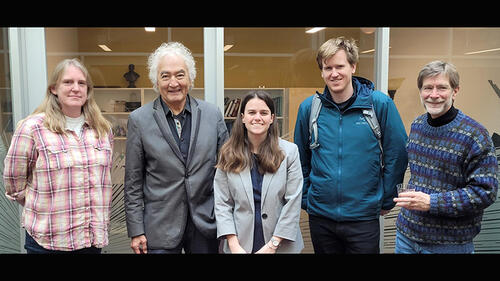
On March 13, 2023, Hannah Bossi successfully defended the thesis “Novel Uses of Machine Learning for Differential Jet Quenching Measurements at the LHC” (advisor: John Harris).
Bossi explained, ”My thesis focuses on using heavy-ion collisions at the ALICE experiment to study a state of matter where quarks and gluons are deconfined, called the Quark-Gluon Plasma. To do this, I use jets, which are narrow cones of particles produced in a heavy-ion collision that lose energy in the presence of the QGP, where this energy loss gives us information on QGP properties. In particular, I looked at how the size of the jet cone influences how it loses energy. These results indicate that wider jets lose more energy, an intriguing observation that may shed light into the role that the structure of the jet plays in its modification.”
Thesis Abstract:
At sufficiently high temperatures and pressures, QCD matter becomes a hot and dense deconfined medium known as the Quark Gluon Plasma (QGP). Collisions of relativistic heavy-ions are used to recreate the QGP, providing a rich laboratory for exploring the mysteries of the strong interaction. The intrinsic and dynamic properties of the QGP are probed with jets, narrow cones of particles resulting from the scattering of quarks and gluons with a high momentum transfer. In heavy-ion collisions, jets interact with the QGP as they traverse it, leading to jet energy loss and modification of the jet’s internal structure. The ALICE detector at the LHC is optimized for measurements in the heavy-ion collision environment and allows for the reconstruction of jets at relatively low transverse momentum. In this thesis, the most differential measurement of jet energy loss ever made by the ALICE experiment, as well as the first measurement of jets in heavy-ion collisions using machine learning techniques, will be described. The cone-size dependence of jet quenching is investigated, revealing hints that wider jets lose more energy; an observation consistent with numerous jet quenching models.